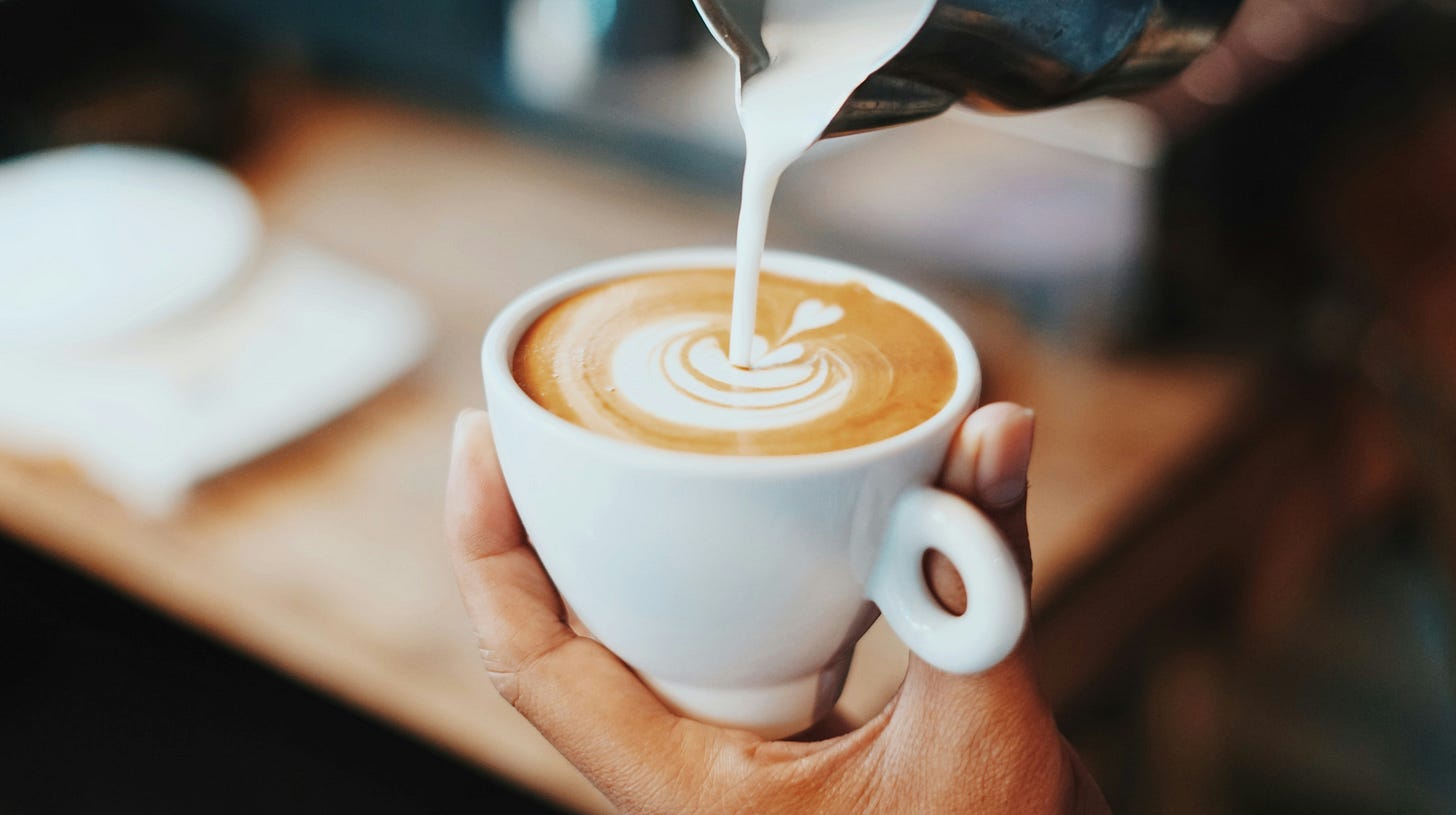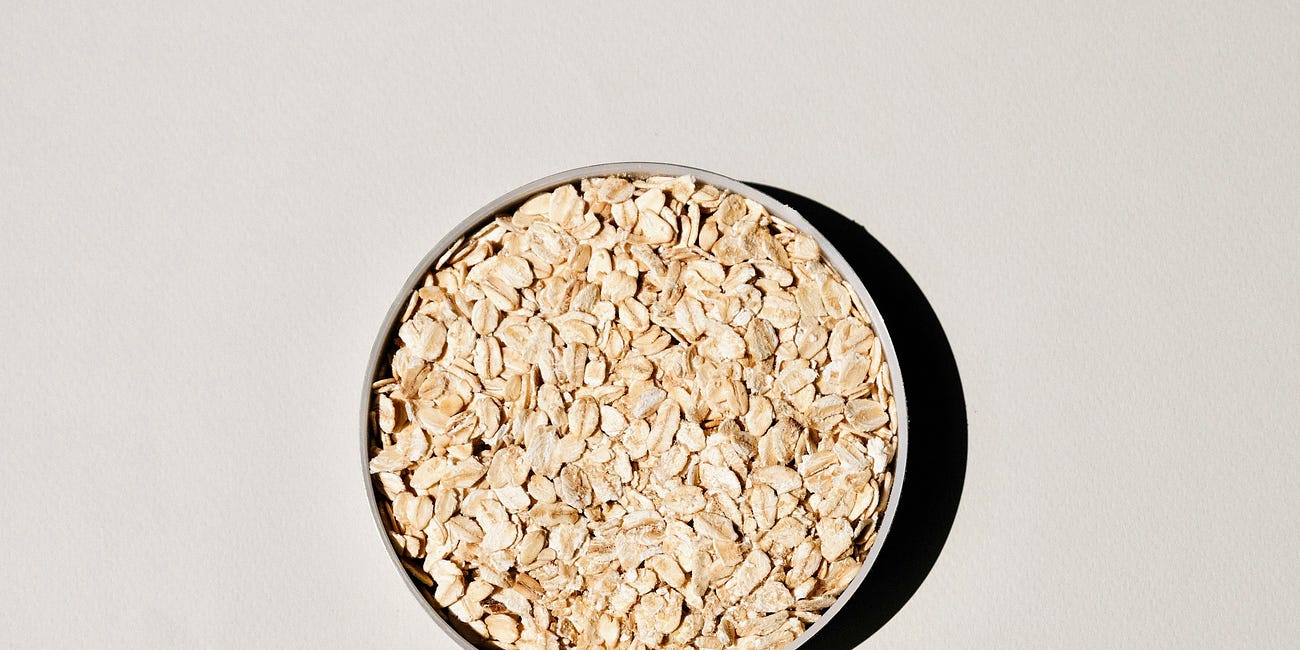How to Order Coffee When You Have Celiac Disease
Sip and enjoy your favorite caffeinated beverages safely.
My day job is fully remote, so I often find myself working from various coffee shops around New York City to get out of the house.
I’m going to be honest with you: Unless I’m inquiring about gluten-free food options, I basically never mention to staff that I have celiac disease or ask for any special considerations (like cleaning steamer wands or shaker cups). Outside of a few very limited circumstances, I don’t really ask any questions about ingredients, either. (Cue the shock!)
In recent months, though, I’ve seen many celiacs on social media post about their anxiety around ordering coffee, going so far as to say they won’t order lattes and other specialty drinks due to the risk of gluten in the ingredients or possibility of cross-contact.
Just how concerned do you need to be about ordering coffee? I chatted with Selena Devries, RD, a British Columbia-based celiac dietitian living with celiac disease, to find out.
Table of contents:
Is coffee gluten-free?
First things first: Is coffee gluten-free? In its purest form, yes, it is. “Plain coffee is always gluten free,” says Devries. If you’re ordering black coffee, there’s no need to ever ask any questions about it at a coffee shop, she adds.
How about flavored coffee beans? “Flavored coffee beans do not contain gluten,” says Devries. “They may contain natural flavors, a gluten-free ingredient that is celiac-safe despite the prevalent myths found online regarding this particular ingredient.” (Devries has a good video on Instagram about this in case you’re curious.)
It’s important to note that coffee can totally cause stomach issues—but this is completely unrelated to gluten. Per a study published in Nutrients, coffee stimulates gastric acid secretion, which can lead to general discomfort as well as nausea, heartburn, and poor digestion.
How to order coffee safely with celiac disease
A while back, Devries posted an Instagram video about how she orders coffee drinks with celiac disease, which I highly recommend watching—especially if you’re an anxious celiac. Ahead, she shares additional insights into ordering coffee safely.
1. Stick with plain coffee
Keeping things simple at a coffee shop is a safe bet. Remember: Plain black coffee is always gluten-free. So are flavored coffee beans. Regular milk—and some plant-based alternatives—are also gluten-free if you prefer your coffee with cream.
2. Ensure oat milk is gluten-free
In recent years, many coffee shops have started offering oat milk as a plant-based alternative to regular milk. Unfortunately, many oat milks aren’t celiac-safe.
“If you’re getting a latte with oat milk, it’s important to make sure it’s celiac-safe oat milk,” says Devries. For an oat-containing product to be celiac-safe in the US, it must either be certified gluten-free or list gluten-free oats as an ingredient.
Oatly is certified gluten-free in the US and Canada and used at some coffee shops. If your local coffee joint doesn’t use celiac-safe oat milk, other plant-based alternatives like almond milk and soy milk are usually gluten-free.
Let's Talk About Oats
You may have noticed that oats are having a moment these days in gluten-free products. If you’ve looked at any gluten-free packaged food labels lately, then there’s a good chance oats are on the ingredient list.
3. Double-check flavored syrups or add-ins
Here’s where things can get a bit dicey: If you’re ordering flavored drinks with syrups or other add-ins, there’s the potential that these ingredients could have gluten in them.
“Although flavored syrups are likely to always be gluten free, it is best practice to check,” says Devries. “As such, if you are getting any type of latte with a flavored syrup or any type of beverage with food inclusions (like tapioca pearls, dried fruit, sprinkles, etc.), you need to ensure they are gluten-free.”
Two popular flavored syrup brands used at coffee shops are Monin and Torani. According to FAQs from both brands, most, if not all, of their flavors are gluten-free.
Devries says many coffee shops—especially big chains—have online allergen menus that make checking ingredients before you order a simple task. For example, you can pull up Starbucks’ US menu and see all of the ingredients. This can help you easily identify which drinks have gluten and which don’t, she adds.
4. Don’t worry about the steamer wand
You may have seen chatter online about the cross-contact risk with the steamer wand when a coffee shop uses non-gluten-free oat milk. Because of this, you may be wondering whether you need to ask the barista to clean the wand before they make your drink to avoid getting glutened.
“This comes up so often, and I cannot emphasize this enough—this is not a cross-contact risk in celiac disease,” says Devries. It all comes down to science, which she breaks down below:
The international agreed upon threshold for how much gluten a celiac can tolerate is around 10 milligrams per day. To keep celiacs safe, most parts of the world have determined that the amount of allowable gluten in gluten-free products is no more than 20 parts per million (ppm), explains Devries.
Ppm is a concentration of a product, not a static amount you can eat. “By keeping gluten-free products below 20 ppm, it ensures that even if people with celiac disease were to eat a lot of gluten-free products in the day, it would keep them below the 10 milligrams daily threshold.”
Back to the steamer wands at coffee shops. To truly understand your cross-contact risk, you need to translate ppm into milligrams of gluten and compare it to the 10 milligrams daily threshold. Devries uses regular oat milk as an example.
There will be variations between different brands of regular oat milk, but Gluten-Free Watch Dog tested one a few years ago that tested at 12 ppm. If you drank a full 8-ounce glass of this oat milk, you’d consume 2.7 milligrams of gluten, which is a lot for a small cup of milk, notes Devries.
Now, let’s estimate that 1 tablespoon of that regular oat milk is left on the steamer wand and then transferred to your latte—which, as Devries says, is an “extremely unlikely scenario.” If this is the case, you’d ingest 0.0843 milligrams gluten.
“I’m sure we can all agree that this is way below the 10 milligrams threshold and not a worrisome amount,” says Devries. “Even more important, though, is that realistically, it would be much less oat milk that might be transferred to your latte, most definitely not 1 tablespoon.”
The bottom line: The steamer wand at coffee shops is a non-issue for celiacs—so go ahead and enjoy your lattes!
What’s your go-to coffee order? Do you want me to cover other drinks like tea in a future newsletter? Drop a comment and let me know!
Sources
Selena Devries, RD, a British Columbia-based celiac dietitian living with celiac disease
Gluten Intolerance Group. Are “natural flavors” a concern if I’m gluten-free? https://gluten.org/faq/are-natural-flavors-something-i-need-to-be-concerned-about/
Nutrients. 2022 Jan 17;14(2):399. “Effects of Coffee on the Gastro-Intestinal Tract: A Narrative Review and Literature Update.” https://pmc.ncbi.nlm.nih.gov/articles/PMC8778943/
Beyond Celiac. Is Milk Gluten-Free? https://www.beyondceliac.org/gluten-free-diet/is-it-gluten-free/milk/
Beyond Celiac. Is Soy Gluten-Free? https://www.beyondceliac.org/gluten-free-diet/is-it-gluten-free/soy/
Gluten-Free Watchdog. Oat Beverages & Celiac Disease: Why We Are a Bit Concerned. https://www.glutenfreewatchdog.org/news/oat-beverages-celiac-disease-why-im-a-bit-concerned/






Im still super sick from a coffee shop i went to last week. But I ordered an Affo Gato and that was clearly a mistake!
Also, just getting started with Buy Me a Coffee. How did you put that button at the bottom of your post?
Great blog post, especially about the oat milk. Good to know.